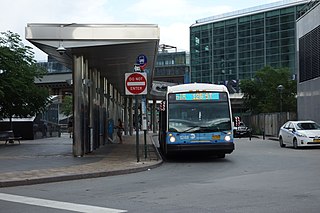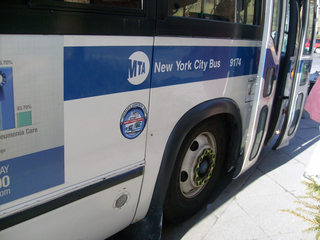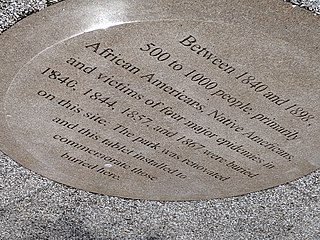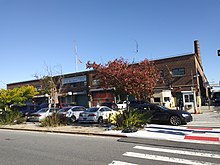
Woodlawn Cemetery is one of the largest cemeteries in New York City and a designated National Historic Landmark. Located south of Woodlawn Heights, Bronx, New York City, it has the character of a rural cemetery. Woodlawn Cemetery opened during the Civil War in 1863, in what was then Yonkers, in an area that was annexed to New York City in 1874. It is notable in part as the final resting place of some well-known figures.

The Granary Burying Ground in Massachusetts is the city of Boston's third-oldest cemetery, founded in 1660 and located on Tremont Street. It is the burial location of Revolutionary War-era patriots, including Paul Revere, the five victims of the Boston Massacre, and three signers of the Declaration of Independence: Samuel Adams, John Hancock, and Robert Treat Paine. The cemetery has 2,345 grave-markers, but historians estimate that as many as 5,000 people are buried in it. The cemetery is adjacent to Park Street Church, behind the Boston Athenaeum and immediately across from Suffolk University Law School. It is a site on Boston's Freedom Trail. The cemetery's Egyptian revival gate and fence were designed by architect Isaiah Rogers (1800–1869), who designed an identical gate for Newport's Touro Cemetery.

Rossville is a neighborhood of Staten Island, New York, on the island's South Shore. It is located to the north of Woodrow, to the west of Arden Heights, and to the south and east of the Arthur Kill. Rossville is located within Staten Island Community Board 3.

African Burial Ground National Monument is a monument at Duane Street and African Burial Ground Way in the Civic Center section of Lower Manhattan, New York City. Its main building is the Ted Weiss Federal Building at 290 Broadway. The site contains the remains of more than 419 Africans buried during the late 17th and 18th centuries in a portion of what was the largest colonial-era cemetery for people of African descent, some free, most enslaved. Historians estimate there may have been as many as 10,000–20,000 burials in what was called the Negroes Burial Ground in the 18th century. The five to six acre site's excavation and study was called "the most important historic urban archaeological project in the United States." The Burial Ground site is New York's earliest known African-American cemetery; studies show an estimated 15,000 African American people were buried here.

Manhattanville is a neighborhood in the New York City borough of Manhattan bordered on the north by 135th Street; on the south by 122nd and 125th Streets; on the west by Hudson River; and on the east by Adam Clayton Powell Jr. Boulevard and the campus of City College.

The First and Second Avenues Line, also known as the Second Avenue Line, is a bus line in Manhattan, New York City, running mostly along Second Avenue from Lower Manhattan to East Harlem. Originally a streetcar line along Second Avenue, it is now the M15 bus route, the busiest bus route in the city and United States, carrying 16.4 million riders annually. MTA Regional Bus Operations, under the New York City Bus and Select Bus Service brands, operates the local out of the Tuskegee Airmen Bus Depot and the SBS from the Mother Clara Hale Bus Depot. Service is operated exclusively with articulated buses.

MTA Regional Bus Operations operates local and express buses serving New York City in the United States out of 29 bus depots. These depots are located in all five boroughs of the city, plus one located in nearby Yonkers in Westchester County. 21 of these depots serve MTA New York City Transit (NYCT)'s bus operations, while the remaining eight serve the MTA Bus Company These facilities perform regular maintenance, cleaning, and painting of buses, as well as collection of revenue from bus fareboxes. Several of these depots were once car barns for streetcars, while others were built much later and have only served buses. Employees of the depots are represented by local divisions of the Transport Workers Union of America (TWU), particularly the TWU Local 100 or of the Amalgamated Transit Union (ATU)'s Local's 726 for all depots in Staten Island, 1056 for Casey Stengel, Jamaica, and Queens Village Depots, 1179 for JFK & Far Rockaway Depots, and 1181 for Spring Creek Depot.

The Flatbush Reformed Protestant Dutch Church, also known as the Flatbush Reformed Church, is a historic Dutch Reformed church – now a member of the Reformed Church in America – at 890 Flatbush Avenue in the Flatbush neighborhood of Brooklyn, New York City. The church complex consists of the church, cemetery, parsonage and church house.

The St. Thomas More Church is part of a Roman Catholic church complex located on East 89th Street, off Madison Avenue on the Upper East Side in Manhattan, New York City. The parish is under the authority of the Archdiocese of New York. Attached to the complex is the church (1870), a single-cell chapel (1879), a rectory (1880), and a parish house (1893). The church was built for the Protestant Episcopal Church as the Chapel of the Beloved Disciple in the Gothic Revival architectural style. Under various names, the church building has been used by three Christian denominations, including Episcopalians, Dutch Reformed, and Catholics. It is the second-oldest church on the Upper East Side.

The Albemarle–Kenmore Terraces Historic District is a small historic district located in the Flatbush neighborhood of Brooklyn, New York City. It consists of two short cul-de-sacs, Albemarle Terrace and Kenmore Terrace, off of East 21st Street, and the 32 houses on the two streets, as well as a four-family apartment building at the end of Albemarle Terrace. The New York City Landmarks Preservation Commission, which designated the district as a landmark in 1978, noted that the "terraces are distinguished by the uniform use of materials, height and color producing a harmonious effect".

The Elmendorf Reformed Church, formerly known as the Elmendorf Chapel, is a historic Reformed Church in America (RCA) church located at 171 East 121st Street between Sylvan Court and Third Avenue in the Harlem neighborhood of Manhattan, New York City. It was founded as a parish house and Sunday school for the First Collegiate Church of Harlem, which had its beginnings in 1660 as the Low Dutch Reformed Church of Harlem or Harlem Reformed Dutch Church, the first house of worship in Harlem. The Church's original burying ground for its African American congregants was discovered in 2008 at the 126th Street Depot of the MTA Regional Bus Operations when body parts were found upon digging at the location. The Metropolitan Transportation Authority agreed to move the Depot by 2015. Sanctuaries were built in 1665–67, 1686–87, 1825 and 1897, at various locations in the area. In 1893-94 a Neoclassical parish house was built on this site under the auspices of Rev. Joachim Elmendorf, designed by Joseph Ireland. Around 1910, the church at the time was torn down, and the parish house was rebuilt as the Elmendorf Chapel, which then became the Elmendorf Reformed Church. It is the oldest congregation in Harlem.

Open Road Park is a small park in East Village, Manhattan, New York City, located east of First Avenue between 11th and 12th Streets. It is among the larger green spaces created in the East Village as a result of community organizing. The site of this park was taken over in 1993 by Open Road, a neighborhood nonprofit that developed the lot into a community garden and playground. Prior to its use as a park, the site was used for many purposes that reflect on the history of the surrounding neighborhood.

The Ted Weiss Federal Building, also known as the Foley Square Federal Building, is a 34-story United States Federal Building at 290 Broadway in the Civic Center neighborhood of Lower Manhattan in New York City. Opened in 1994, the building was developed by Linpro New York Realty and designed by Hellmuth Obata & Kassabaum (HOK), with Raquel Ramati Associates as the design consultant and Tishman Construction as the general contractor. The building is named for Ted Weiss (1927–1992), a U.S. representative from New York.

St. Paul's Church is an Episcopal church founded in 1702 in Chester, Pennsylvania. The church is a part of the Episcopal Diocese of Pennsylvania. It is located at 301 East 9th Street and is an active worship center.

Old Town of Flushing Burial Ground is a historic cemetery located in Flushing, Queens, New York City. It was established in 1840 and known as The Olde Towne of Flushing Burial Ground. It was the result of Cholera and Smallpox epidemics in 1840 and 1844, added by town elders north of Flushing Cemetery due to fears of contamination of church burial grounds. Once known as "Pauper Burial Ground", "Colored Cemetery of Flushing" and "Martins Field", it was purchased by the New York City Department of Parks and Recreation on December 2, 1914, and renamed in 2009 to "The Olde Towne of Flushing Burial Ground".

The Flatbush African Burial Ground or FABG is the site of a historic African-American cemetery dating to the 17th century at Church and Bedford Avenue in Brooklyn, on land formerly owned by the adjacent Flatbush Reformed Dutch Church.
Patricia Ann Singletary is an American pastor, educator, author, and community organizer. She is the founder of Adoni Economic Enterprises, Inc. In 2002, she became the first female minister of Elmendorf Reformed Church in Harlem, the oldest religious congregation in Harlem dating back to 1660. Singletary is the author of, “The African-American Guide to Buying Stock Without a Broker.” She is the co-founder of the Harlem African Burial Ground Task Force.


















